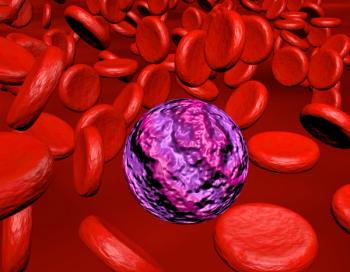
- Oncology Vol 29 No 4_Suppl_1
- Volume 29
- Issue 4_Suppl_1
(P126) Long-Term Volumetric Follow-Up of Juvenile Pilocytic Astrocytomas Treated With Proton Beam Radiotherapy
Pediatric patients with PAs can have extended survival following proton beam radiotherapy. This volumetric study illustrates that responders are declared within 6 months, but vigilant surveillance is necessary due to the potential need for postradiotherapy interventions.
Edward M. Mannina, MD, MPH, MS, Greg Bartlett, CMD, Peter A. Johnstone, MD, Kevin P. Mcmullen, MD; Indiana University School of Medicine; University Of South Florida
INTRODUCTION: Juvenile pilocytic astrocytomas (JPAs) are World Health Organization (WHO) grade 1 glial neoplasms treated by resection with radiotherapy reserved for inoperable cases or following subtotal resection. Proton radiotherapy minimizes integral dose and is thus preferred in children. We analyzed the magnetic resonance imaging (MRI) follow-up of patients with JPA treated with proton radiotherapy to define the volume changes, response rate, need for postradiotherapy intervention, and survival.
METHODS: A total of 15 pediatric patients histologically diagnosed with JPA made up this retrospective report. From August 2005 through March 2012, patients were treated to a median dose of 5,400 cGy (relative biological effectiveness [RBE]) using proton radiotherapy and then followed with serial MRIs for 3 years. MRIs were imported into Eclipse 11 treatment planning software, where contours of the T1 contrast-enhancing volumes, including cystic components, were generated by one clinical radiation oncologist (EMM). Volume in cm3 was plotted against time since completion of therapy to track volumetric changes. Demographics, prior therapies, and postradiotherapy interventions were cataloged.
RESULTS: This is a retrospective review of 15 patients with a mean age of 10.9 years (range: 4–20 yr) and mean number of 8.9 MRIs (range: 4–12). A total of 10 of 15 (67%) patients had prior R2 resections, with 3 patients having two R2 resections. Further, 12 of 15 (80%) patients had cerebrospinal fluid (CSF) shunts prior to radiotherapy, and 9 of 15 (60%) patients received prior chemotherapy, all with at least a platinum agent and vincristine. With a median follow-up of 55.3 months, 14 of 15 (93%) patients were alive, for an estimated 5-year overall survival (OS) of 93.3%. Median event-free survival (EFS) was 86.6 months, with an estimated 5-year EFS of 72.2%. A total of 11 of 15 (73.3%) patients were declared to be responders by 6 months, with 3 of 11 (27%) demonstrating pseudoprogression (increase in volume followed by spontaneous regression), with a mean time to maximum volume of 177 days. Also, 4 of 15 (26.7%) patients were nonresponders, including one who died of progression 9 months after radiotherapy and another who restarted chemotherapy. Three patients underwent shunt revisions, while two received hyperbaric oxygen, one for presumed radionecrosis and another for biopsy-proven radionecrosis (the only patient with prior radiation). Stereotactic cyst aspiration was required in one case. One heavily pretreated patient developed a hematologic malignancy requiring further chemotherapy. A total of 8 of 15 (53.3%) patients required no further therapy or intervention after radiotherapy. Gross tumor volume changes ranged from a 91% reduction to a 207% increase during the evaluation period.
CONCLUSIONS: Pediatric patients with PAs can have extended survival following proton beam radiotherapy. This volumetric study illustrates that responders are declared within 6 months, but vigilant surveillance is necessary due to the potential need for postradiotherapy interventions.
Proceedings of the 97th Annual Meeting of the American Radium Society -
Articles in this issue
Newsletter
Stay up to date on recent advances in the multidisciplinary approach to cancer.


















































































